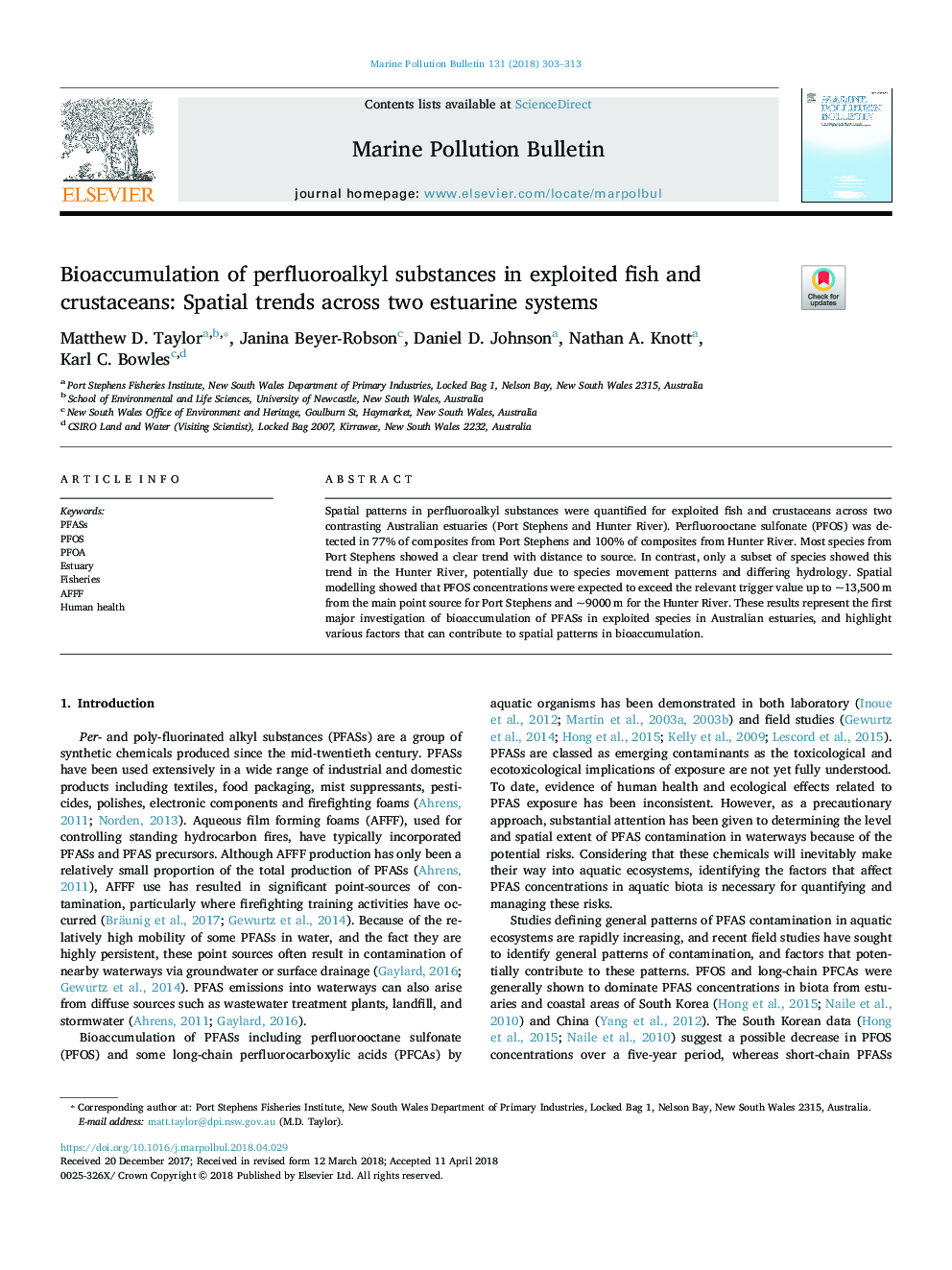| Article ID | Journal | Published Year | Pages | File Type |
|---|---|---|---|---|
| 8870988 | Marine Pollution Bulletin | 2018 | 11 Pages |
Abstract
Spatial patterns in perfluoroalkyl substances were quantified for exploited fish and crustaceans across two contrasting Australian estuaries (Port Stephens and Hunter River). Perfluorooctane sulfonate (PFOS) was detected in 77% of composites from Port Stephens and 100% of composites from Hunter River. Most species from Port Stephens showed a clear trend with distance to source. In contrast, only a subset of species showed this trend in the Hunter River, potentially due to species movement patterns and differing hydrology. Spatial modelling showed that PFOS concentrations were expected to exceed the relevant trigger value up to ~13,500â¯m from the main point source for Port Stephens and ~9000â¯m for the Hunter River. These results represent the first major investigation of bioaccumulation of PFASs in exploited species in Australian estuaries, and highlight various factors that can contribute to spatial patterns in bioaccumulation.
Related Topics
Physical Sciences and Engineering
Earth and Planetary Sciences
Oceanography
Authors
Matthew D. Taylor, Janina Beyer-Robson, Daniel D. Johnson, Nathan A. Knott, Karl C. Bowles,
